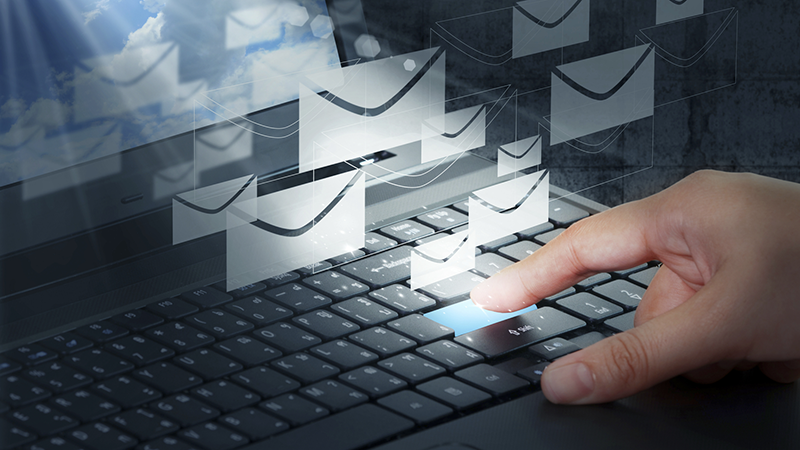In this series, we are focusing on helping you create the most effective B2B email newsletters to help grow your business. Read effective newsletters part one and effective newsletters part two to get the full scoop. In this post, learn how to send (and send well) for maximum engagement.
Now that you have a great looking email template and a well-conceived list targeted to your ideal customer, you are ready to send. But before you hit send and start popping the champaign, there are few things to consider to maximize your send.
You’re not going to send once.
Not to burst your bubble, but there is a reason we call them email campaigns. Sending a newsletter at one point in time would be like putting up a sign for an hour on a busy road. You might get a few people, but you’ll miss the majority.
Many people don’t always want to take time to hold and revisit email communications. They might be deleted or lost in the shuffle. So many times, we recommend sending the newsletter twice, making sure not to overlap those who have already successfully seen the content.
AB Testing with email delivery.
Another thing you are going to want to do is A/B test your email campaigns. Always testing to get better should be at the backbone of your email campaign. You want more engagement each time to send the newsletter so you can better communicate to your customers.
There are many resources on AB testing, but the idea is to test one thing, subject line, images, content, etc, to see if it increases the engagement with the content.
When is the best time to send email?
This is “the” question when it comes to email newsletters. And while we do know some industry best practices (like the fact that Tuesday afternoon is usually a great time) the answer has to come back to an understanding of your industry and list. Knowing your list is the #1 thing to know when creating a good time to send. Also, there are a growing amount of analytic tools that can be used to find the best send times for your emails, all in accordance to previous open rates and user information for even higher targeting.
Sending email is becoming a bit more flexible, and people are checking email at very strange timings. So getting in the inbox is step one; figuring out a good time is secondary. Think about it yourself. Do you have a time you are more “open” to email communication than any other time? It’s more about relevance and connection than it is the hands on the clock.
How to know your email worked.
This last section of the article is on email metrics and how to understand if your email campaign is successful. Getting it out the door was step one – now let’s look to see how it did.
Common Email Metrics
These are a few of the common email metrics you will encounter.
Delivery Rate – This is generally the % of email that hit inboxes and were not returned or bounced. These “reached” the inbox, as far as we know.
Bounces – Email bounces are the various reasons that emails do not deliver. There are hard bounces (missing email addresses) and soft bounces ( DNS issues, or mailbox full errors). Each of these can help you clean your list and keep it fresh.
Open Rate – This is a tricky one, because the tracking of this metric is not infallible. So, what we are saying with this is what % of delivered emails were opened. This is rough at best, but gives you some idea as to the overall engagement.
Click-Through Rate – this is the metric of how many clicks your email received from the links that are contained within it. Now, something to think about here: the more links in your email, the greater the likelihood you’ll have a higher CTR. So if you are trying to drive traffic as part of your success metrics, you will want many opportunities for clicks in the design. This will help your CTR.
Shares – If you want to use social shares as a metric, make sure to have social sharing on your email to help the newsletter get shared. This way, recipients won’t have to take the extra step to a social media platform themselves.
Wrapping it all together
Creating a winning email newsletter campaign can be a simple process. It can also be void of results and a waste of time. Finding the balance between your investment and your results is the key. Create a good list and keep it updated. Have a clean and clear email newsletter template, and send smart email campaigns focused on quality content.
You’ve got this. Now get out there and send great emails.






